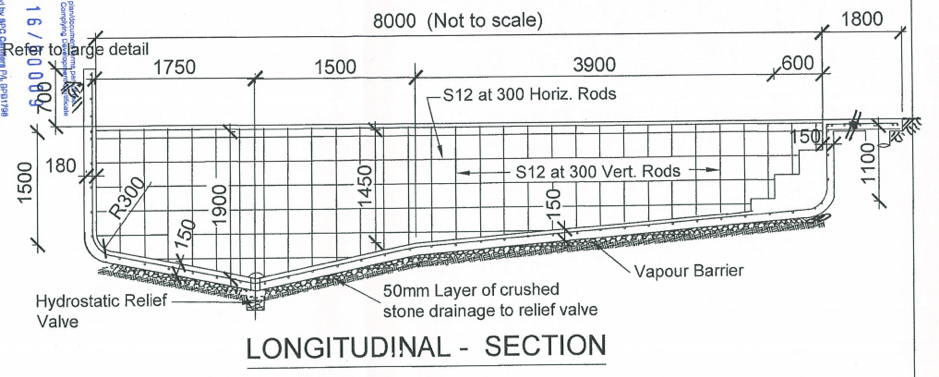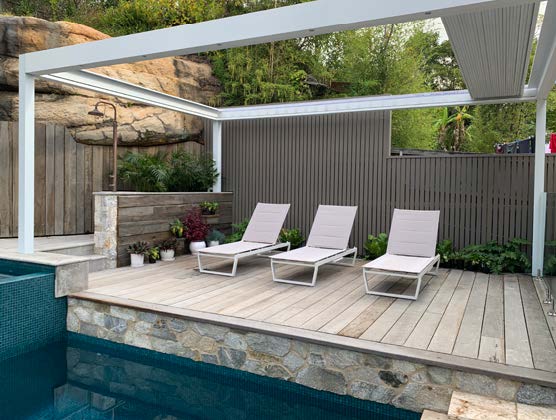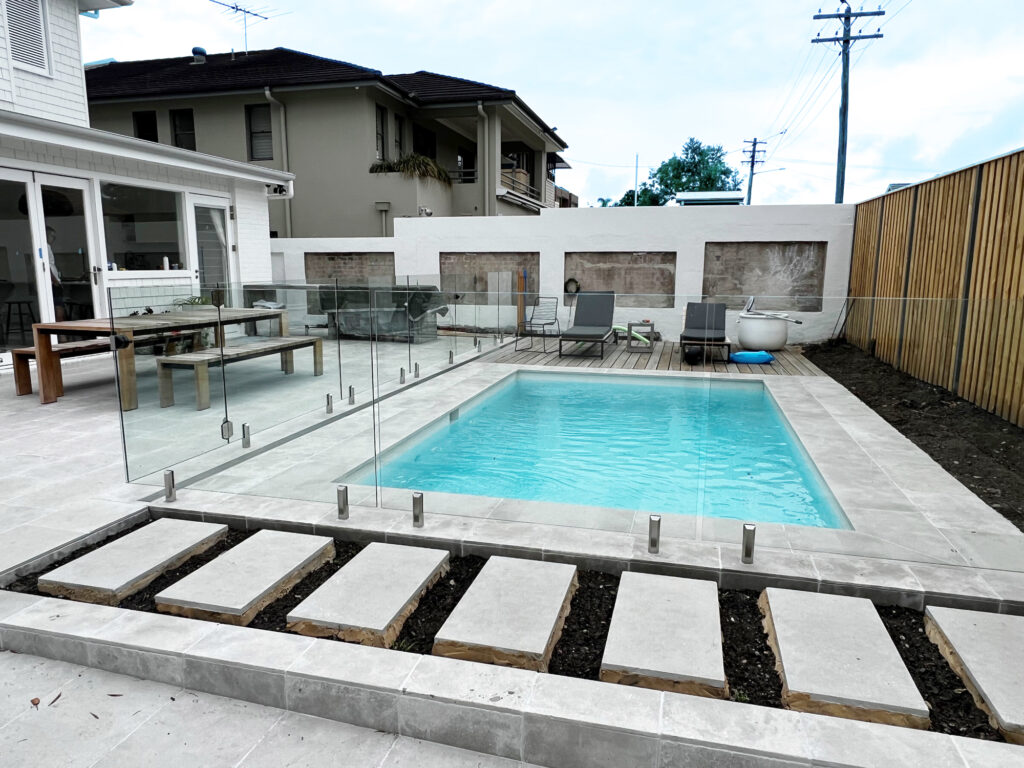The depth of your pool is an important decision. Getting the right advice is crucial.
Deciding how deep to make your concrete in-ground swimming pool is one of the important decisions to be made when building a pool. While other decisions such as shape, placement and materials might be top of mind, deciding on the correct depth of your pool is equally important. And it’s a question our team of professional swimming pool builders at Lap of Luxury Pools will seek to answer.
Well, as basic a question this may seem it is far from straight forward. It could be one of the most agonising decisions for those seeking to transform their back yard to a perfect oasis and one of the most common questions asked by prospective swimming pool owners. Most residential concrete in-ground swimming pools have a sloping transition to the deep end allowing for jumping and diving.
So then, just how deep should I make my pool?
The question about the shallow end and deep end depths really depends on the size and design the pool – there is no right or wrong answer. That said it is important to understand the intended use for the pool and overall dimensions of a pool. The best way to demonstrate is to provide a typical example of the construction of a concrete swimming pool on a standard block in Sydney undertaken by us here at Lap of Luxury Pools.
Lap of Luxury Pools can help you choose the right depth.
A recent customer engaged Lap of Luxury Pools to build a concrete in-ground swimming with dimensions being 6.2m long and 2.8m wide. The customer requested that their concrete inground swimming pool have a minimum 1.9m depth in the deep end to allow their kids to safely dive in. The issue that the construction manager and the engineer at Lap of Luxury Pools discussed with the customer was the difficulty managing the transition over a 6.2m swimming pool. We calculated the useable area of the pool for general playing and wading taking into account other factors such as pool floor radius and the deep end bowl which limit the useable distance to manage a shallow to deep end transition.
Based on our experience, we were able to demonstrate that by having a 1.9m deep end a 6.2m long swimming pool and taking into account the deep end bowl and pool floor radius, less than half the pool or less than 3m would be useable for general wading and playing.
By recommending that the maximum pool depth no exceed 1.7m, we were able to provide a deep enough pool for diving yet increase the useable wading area of the swimming pool to 4m and bring the overall price of the pool down. The customer was extremely happy with the end result.
Below is a typical longitudinal sectional of a recently completed concrete inground swimming pool in Sydney that is 8m long with a 1.9m deep end. Given that the pool is 8m long, having a 1.9m depth is acceptable as the transition can be appropriately managed as the engineering drawings demonstrate.
Typical longitudinal sectional

The transition consideration means that the greater the difference in depth, the longer the slope needs to be. In other words, the deeper you want your pool to be at the deep end, the longer your pool will need to be.
Another consideration with depth and swimming pool transition is the selection of internal finishing surface. We recently had a customer in Sydney who was concerned about the safety with the depth and aggressive transition in their fully tiled concrete inground swimming pool. The pool was approximately 7m long and fully tiled in glass mosaic tiles. The steep transition angle along with the glass mosaic tile meant that when playing with their children, the owners felt that the pool was unsafe. The pool was too deep from the middle of the pool towards the deep end and was extremely slippery under foot when trying to carry a child and get back to a safe depth.
Lap of Luxury Pools was engaged by the customer to complete a full interior swimming pool renovation which involved changing the internal depths to make the pool safer and more useable for the owners.
Here are some guidelines when selecting the depth of certain areas of your concrete inground swimming pool
Kids Play Area or Swimout – Should allow children to practice swimming safely while still being able to touch the bottom and stand with their head well above water. Avoid sloping swimouts towards the main pool.
For swimming, recreational pool activities such as volleyball and just lounging about, water should be about waist height so approximately 1.2m deep.
For diving, the pool should be at least 1.7m deep. That said, it is always recommended that you test the water depth before diving head first into any pool!
What about multiple depths or other considerations
The traditional concrete inground swimming pool has a shallow end on one side at about 1.1-1.2m deep transitioning to a deep end at approximately 1.6-1.8m deep.
Some owners have a deep end in the middle of the pool leaving the swimming pool shallow at both ends. This would be ideal for a rectangular pool primarily used for pool volley ball. (See diagram below)
L shaped pools or pools with swim-outs or beach areas will require custom design.
Pool with central deep section

Going deep means digging deep into your pocket
So, shallow pools are safe for kids but on the other hand deep pools are great for jumping and diving. One thing to consider is that the deeper you go, the more expensive the pool will cost to build and maintain. Deeper pools require deeper excavation and more labour and materials such as steel and concrete. In addition to this, deeper pools hold a greater volume of water, all else being equal, and so costs more to maintain. Lap of Luxury Pools can guide you through your decision.
At lap of luxury pools, we have been involved in the construction of well over 2,000 swimming pools and spas across Sydney since 1994 and have been able to provide expert advice and impressive results for our customers. Unlike many swimming pool builders around, we pride ourselves on construction excellence as we own our construction trades and work closely with engineers, architects, builders and home owner’s right across Sydney and surrounding suburbs.



